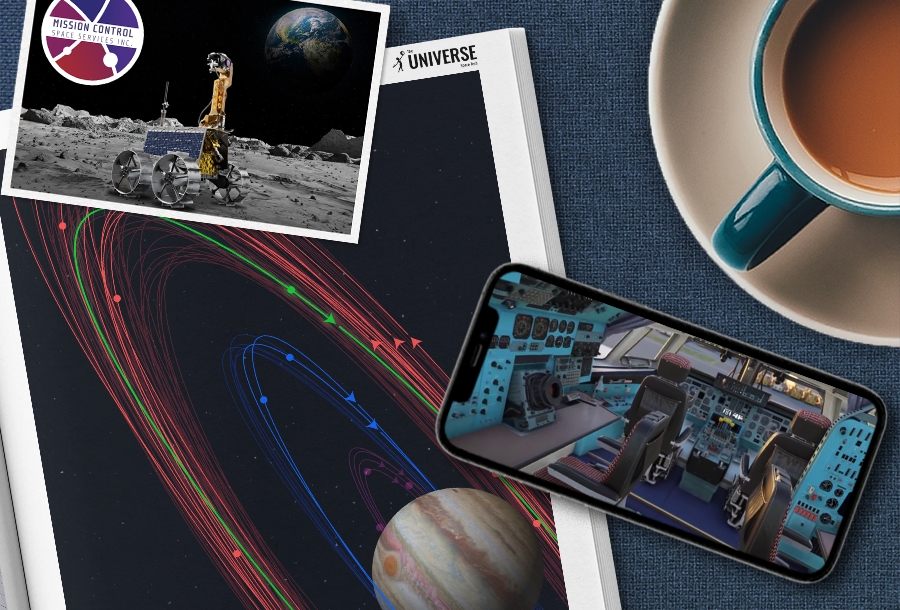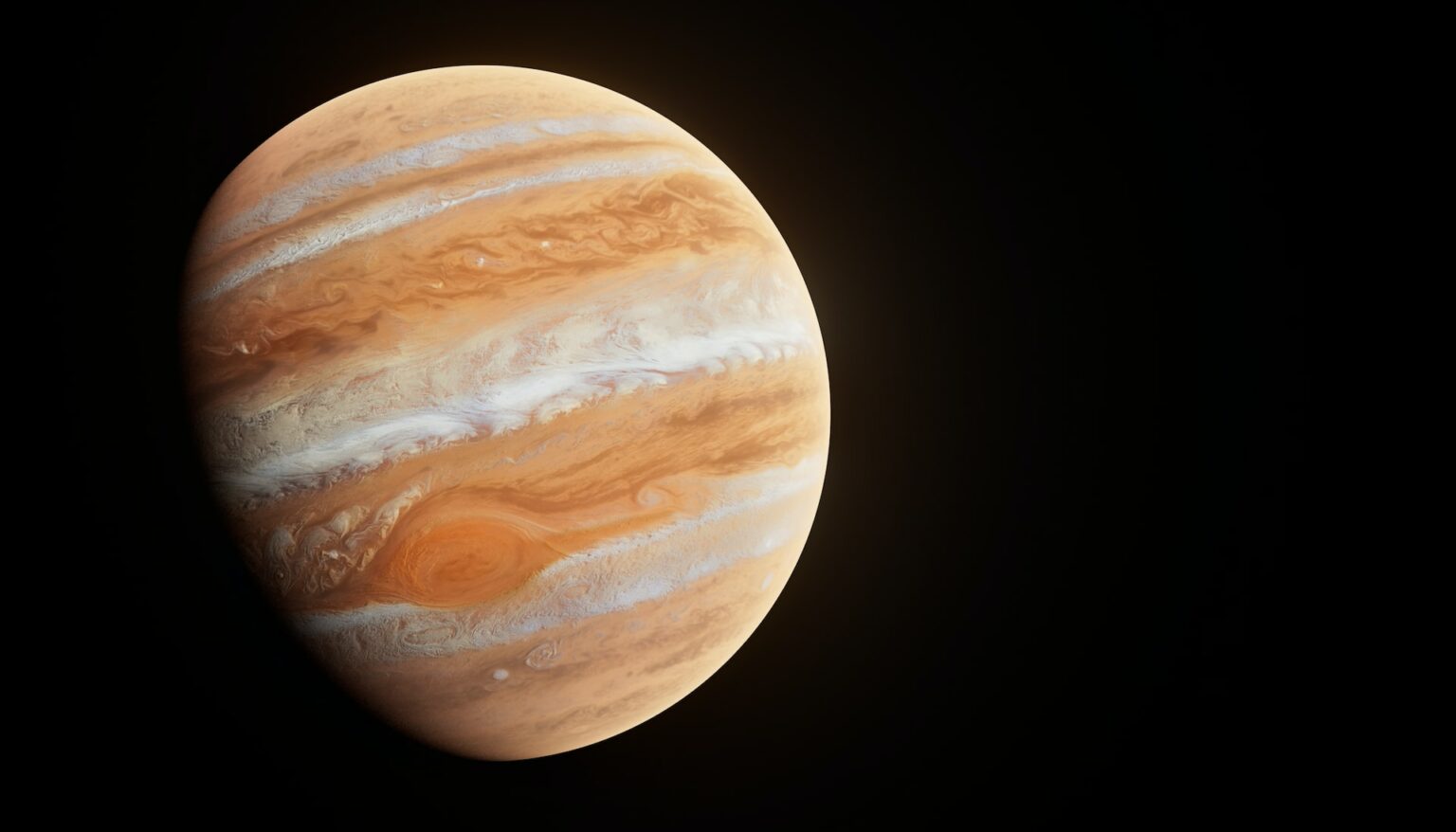Selection of the most interesting space news for the week: Artificial intelligence will fly to the Moon for the first time; rockets with ion thrusters will be able to make fast interplanetary flights, and we are talking about the Columbia shuttle disaster.

“The saddest aspect of life right now is that science gathers knowledge faster than society gathers wisdom.”
― Isaac Asimov
Ion thrusters will take astronauts to the vicinity of the Solar System
Ion thrusters, also known as Hall-effect thrusters, can indeed produce more power than expected. Now such engines are used to regulate the orbit of satellites. But according to a new study, their power can be increased for fast interplanetary flights, for example, for a crewed mission to Mars or even further, which is previously considered unlikely and even fantastic.
Benjamin Yorns, an associate professor of aerospace at the University of Michigan, said he had found a way to significantly increase the thrust of the ion thruster. He and a team of engineers accelerated the Hall thruster with a xenon engine a hundred times and tried to cool it with water to avoid overheating. They found that the thruster was able to increase power from 9 kW to 37.5 kW, while its efficiency remained at 49%. The team continued on. In the next experiment, they used the lighter noble krypton gas as fuel. With it, they were able to achieve a power of 45 kW with an even greater efficiency of 51%.
Mining startup AstroForge promises two missions by the end of 2023
Startup AstroForge, which goal is mining on asteroids, said that by the end of 2023 it would launch two missions into space. The first, called Brokkr-1, is based on a platform of six interconnected cubesats and will operate in Earth orbit. It will be launched in April 2023 as part of SpaceX’s Transporter-7 mission. The device will try to vaporize a small amount of asteroid-mimicking material with a laser. And then it will separate the substances and isolate valuable metals from them.
The second mission, called Brokkr-2, is scheduled to launch in October 2023. It will be a much larger device, the weight of the platform of which will be 100 kg. Its main goal will be to approach one of the near-Earth asteroids and study its composition and surface.
The Ukrainian AN-225 Mriya aircraft will appear in the Microsoft Flight Simulator game
The next aircraft in the Famous Flyer series for the Microsoft Flight Simulator video game will be the Ukrainian An-225 Mriya. The world’s largest aircraft will appear in the game on February 27 — the anniversary of the destruction of the real “Mriya” at Gostomel airport near Kyiv during its assault by Russian troops. With the release of a virtual giant aircraft, Microsoft wants to perpetuate the famous An-225. The iniBuilds studio worked on the creation of a virtual model of the Ukrainian aircraft, in theory, in cooperation with the Antonov State Enterprise. To pilot the legendary giant, you will need to purchase a DLC worth USD 20. It is expected that part of the money from the sales of the virtual aircraft will go to renew the real Mriya (Dream).
South Korea will launch a satellite not with a Russian rocket, but with a European one
South Korea has announced that KOMPSAT-6 will be launched using the European carrier Vega C. Earlier, this spacecraft was planned to be launched with the help of a Russian Angara rocket, but these plans were canceled due to the war in Ukraine. KOMPSAT-6 is the second SAR satellite in the history of South Korea. The synthesized aperture radar allows to obtain images of the surface day and night and in any weather. It is planned that within 5 years it will be able to supply users with images with an accuracy of 0.5 m per pixel.
First artificial intelligence on the Moon will work on the Arab rover
On board the United Arab Emirates rover Rashid, an artificial intelligence created by the Canadian MCSS campaign is flying to the Moon. Since the energy resources on board the Rashid are extremely limited, it will not be able to transmit a huge number of images, which will then be viewed on Earth in search of something interesting. Instead, the artificial intelligence on board will immediately process the image, determining what type of surface each pixel represents on them. Next, it will select images that are interesting for scientists and, with the participation of the Hakuto-R lander, will send them to Earth. And already there, scientists will make decisions where the lunar rover will move next.
Photo of the week
Faint drops of light are exoplanets orbiting the star HR 8799. Authorship: WM Keck
In 2008, HR 8799 became the first system in which it was possible to explore exoplanets. Since then, Northwestern University astrophysicist Jason Wang has been using the WM Keck Observatory in Hawaii to monitor them. That’s where the slow-motion images come from. The work of the scientist allows tracing a decade of the movement of the planets HR 8799 in just a few seconds.
Interesting figure — 92 moons

Jupiter is the “king” of the planets of the Solar system. It is the largest, the most massive, has the largest vortices, a powerful magnetic field and holds dozens of moons in its gravitational captivity. It seems to be enough, but it looks like Jupiter has broken its own record for the number of moons. Scientists have discovered 12 more small moons, bringing their total number to a whopping 92. Thus, Jupiter takes the lead from Saturn in the number of moons. The rival ring gas giant has only 83 known moons.
Something to read on the weekend

For history, the first day of February turned out to be eventful. In 1958, a Juno I rocket was launched from the Cape Canaveral cosmodrome. It put Explorer 1 into orbit, which went down in history as the first American artificial satellite of the Earth. 45 years later, on the same day in 2003, the Columbia shuttle crashed while returning to Earth after 15 days in space. Read more about these events in our articles “The Explorer 1 turns 65. How the first American satellite helped to create NASA” and “Lessons unlearned. How NASA lost the space shuttle Columbia“. Also, the UST edition tells about the main astronomical events of February.
Follow us on Twitter to get the most interesting space news in time
https://twitter.com/ust_magazine

